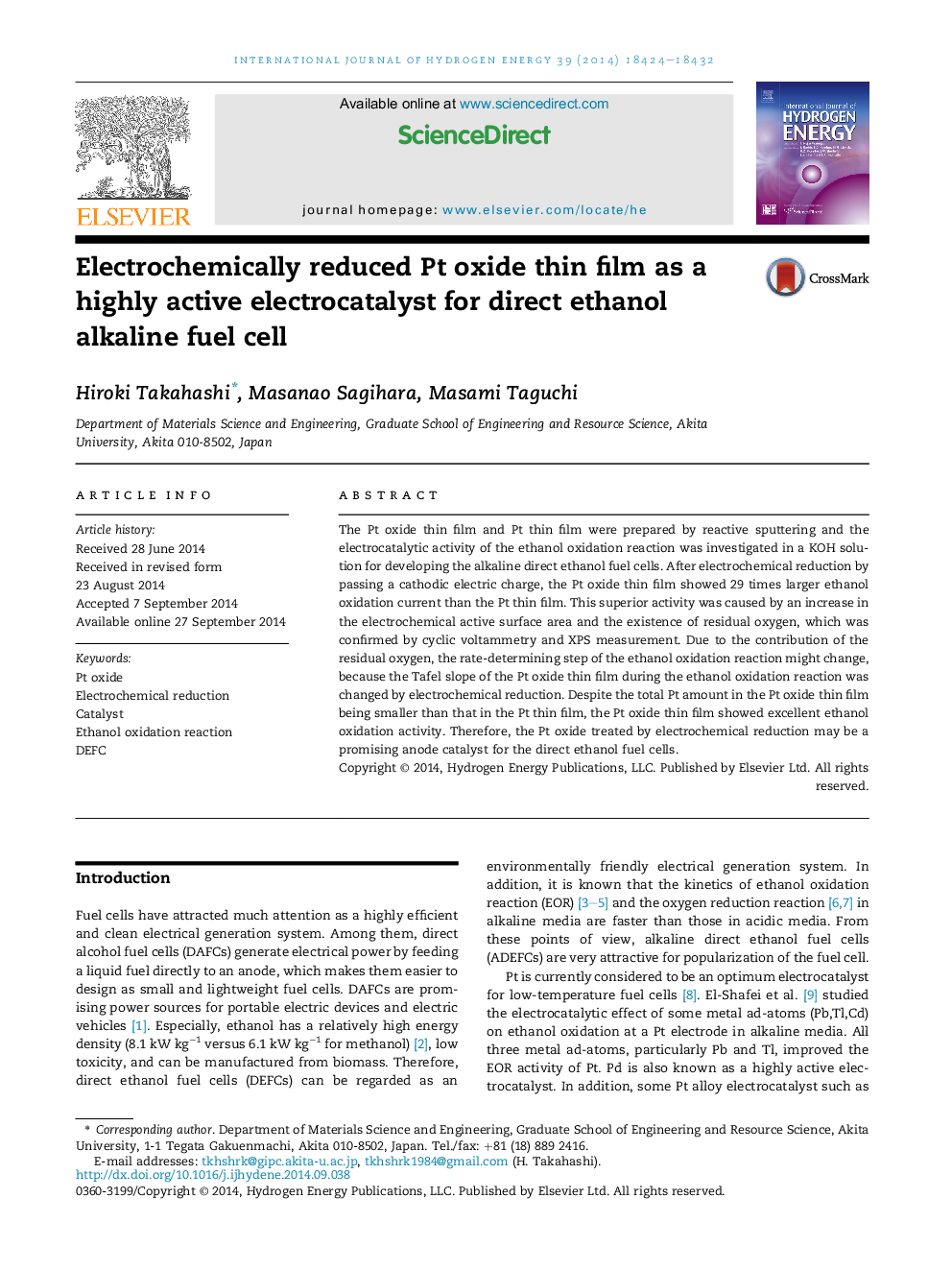| Article ID | Journal | Published Year | Pages | File Type |
|---|---|---|---|---|
| 1280853 | International Journal of Hydrogen Energy | 2014 | 9 Pages |
•The Pt oxide thin film was prepared by reactive sputtering.•The Pt oxide showed 29 times larger ethanol oxidation current density than the Pt.•High activity was due to an increase in ESA and existence of residual oxygen.•Existence of residual oxygen might affect the rate-determining step.•The Pt oxide catalyst is a promising material for the DEFC anode.
The Pt oxide thin film and Pt thin film were prepared by reactive sputtering and the electrocatalytic activity of the ethanol oxidation reaction was investigated in a KOH solution for developing the alkaline direct ethanol fuel cells. After electrochemical reduction by passing a cathodic electric charge, the Pt oxide thin film showed 29 times larger ethanol oxidation current than the Pt thin film. This superior activity was caused by an increase in the electrochemical active surface area and the existence of residual oxygen, which was confirmed by cyclic voltammetry and XPS measurement. Due to the contribution of the residual oxygen, the rate-determining step of the ethanol oxidation reaction might change, because the Tafel slope of the Pt oxide thin film during the ethanol oxidation reaction was changed by electrochemical reduction. Despite the total Pt amount in the Pt oxide thin film being smaller than that in the Pt thin film, the Pt oxide thin film showed excellent ethanol oxidation activity. Therefore, the Pt oxide treated by electrochemical reduction may be a promising anode catalyst for the direct ethanol fuel cells.
Graphical abstractFigure optionsDownload full-size imageDownload as PowerPoint slide
